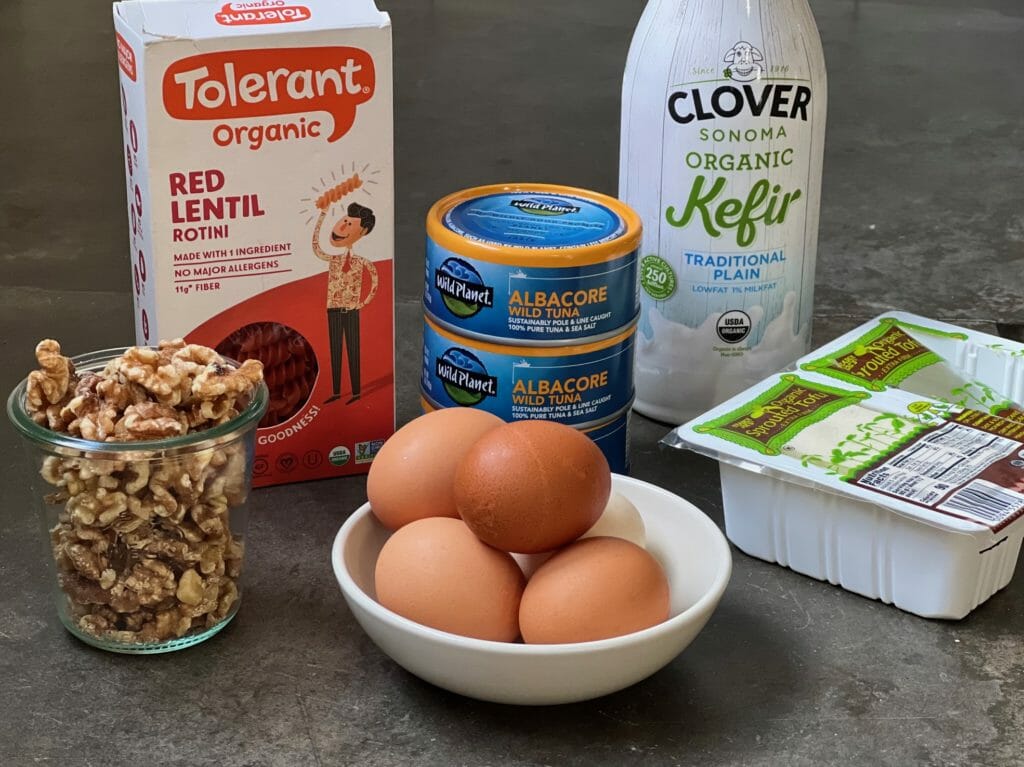Of all the talk about nutrition these days, guidelines around how much protein to eat is particularly confusing. Take for instance, the Instagram influencer with half of a million followers who recommends 150 grams of protein a day. For someone my size, this exceed the USDA guideline by more than 250 percent. That’s a vast gap and leaves many of us scratching our heads. So, I thought I’d take a hot minute to address the topic of protein.
Why Protein Matters
Let’s start with the fact that protein is not a food, but a nutrient that’s in a variety of food, much like carbohydrates and fats are. Protein is important for a whole lot of reasons, from building muscle to making antibodies. Getting enough protein is key from a dietary standpoint. “We know that protein, along with fat, takes longer to digest than carbohydrates,” says Registered Dietitian Susannah Wallenstrom. “So it can help with that feeling of fullness.” Eating protein-rich foods helps keep blood sugar steady, says Wallenstrom, thus avoiding the spikes that can occur following meals made up of carbohydrates alone.
How Much Protein is Enough?
That brings us to the question of how much? The amount varies depending on age, gender, and activity level. The USDA recommendation of .8 grams of protein per kg of body weight is meant for sedentary adults and skews low according to many nutrition experts. In her Sports Nutrition Guidebook, Nancy Clark, MS, RD advises anywhere from 1.1 to 1.6 grams per kg, depending on age and activity level (1 kg is 2.2 lbs). And according to Elizabeth Ward, co-author of The Menopause Diet Plan, getting enough protein is particularly important as we get older, since it may help prevent the creep of weight associated with aging (something I touched on in this post).
Can you Get Too Much Protein?
Absolutely. The problem with too much protein is that it can crowd out other nutrients. Carbohydrates are key, including fruits, vegetables, whole grains, and legumes, which collectively deliver fiber, phytochemicals, and a huge range of nutrients. And fats are essential too, for carrying fat soluble vitamins, heart healthy Omega-3s, and so much more. Protein overload can also be hard on the kidneys, so it’s important to get your protein, but keep it in check.
When to Eat Protein-Rich Foods
It’s not just how much protein to eat, but when to eat it, says Wallenstrom, “A lot of people are probably getting enough protein, they’re just not spacing it throughout the day.” Most folks tend to eat it mostly at lunch and dinner, while breakfast gets shortchanged. Including protein in every meal, not only adds up to greater satiety and more steady blood sugar, but likely allows your body to utilize it more effectively than eating one big dose at the end of the day, says Wallenstrom. It’s also a wise move to consider including protein in snacks, such as hummus and carrots or apples and peanut butter.
Plant-Based Protein Adds Up
It’s also important to keep in mind that protein shows up in a variety of foods. Though meat is exceptionally high in protein, it also tends to be high in saturated fat, making it hard on your cardiovascular system. Plus, the animal production is hard on the planet. It’s worth expanding beyond the butcher case to include beans, lentils, tofu, yogurt, bread, grains, and vegetables as additional sources of protein. Over the course of three meals and a snack, you can get all the protein you need on an entirely vegetarian diet if that’s your jam. Though the amounts vary be variety, here are some rough ideas of the protein level in a variety of foods::
- Nuts & Seeds: 5-6 grams in 1 ounce
- Peanut butter: 8 grams in 2 tbsp.
- Quinoa : 8 grams in 1 cup
- Beans: 8 grams in ½ cup
- Sprouted grain bread: 8 grams in 2 slices
No Need to Track Every Gram of Protein
Now that I’ve thrown a bunch of numbers at you, I want to be clear that you don’t need to keep a diary and write down every bite. I certainly don’t. Though I like to target about 20 grams of protein at each meal, I mainly just do a little check in as I’m cooking to make sure I’ve included protein-rich foods. I could very easily down a slice of avocado toast and forget the eggs entirely. Or whiz up a smoothie without remembering to add the Greek yogurt or silken tofu.
What 20 Grams of Protein Looks Like
With all that said, below I’ve sketched out (roughly) what 20 grams of protein looks like for breakfast, lunch, and dinner.
